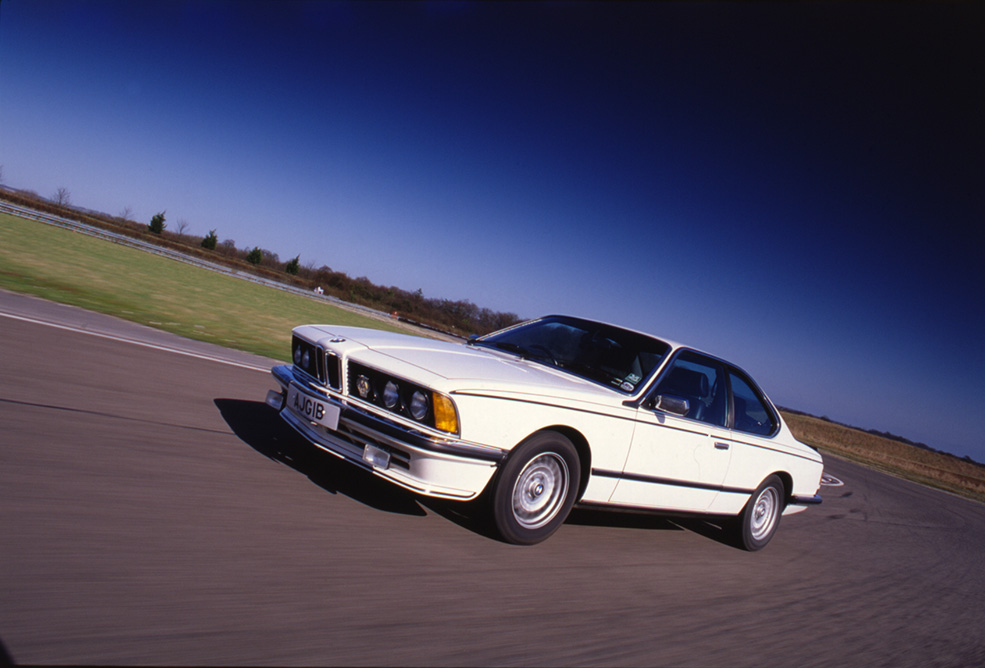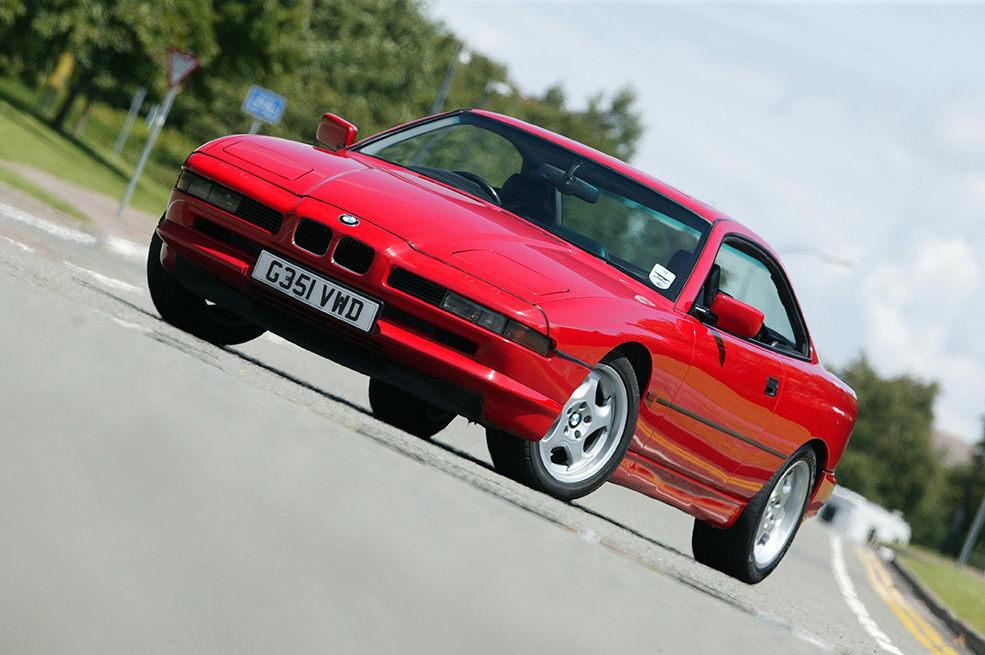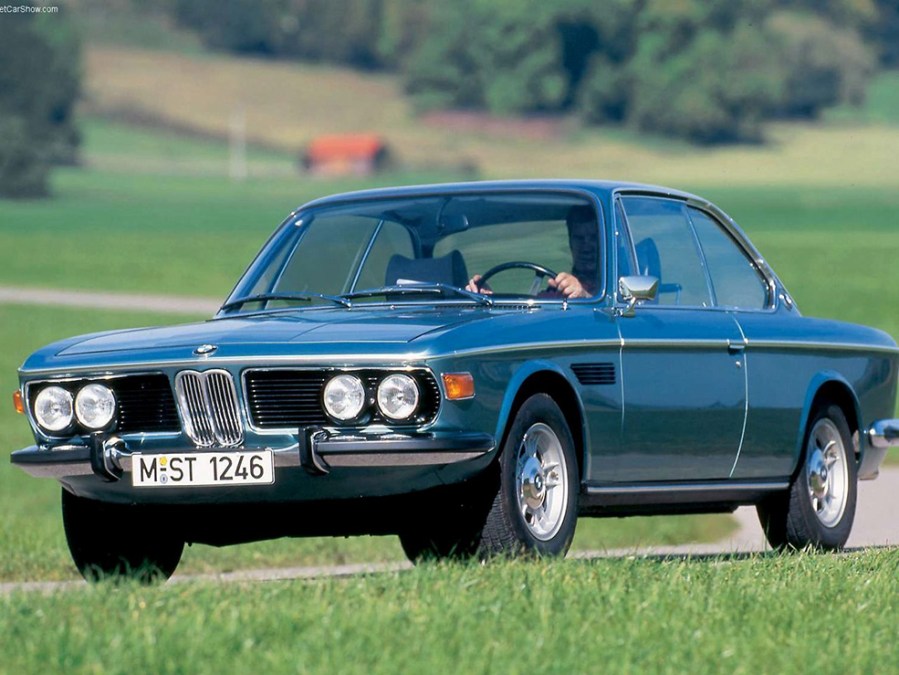1974 BMW CS – £30,000
Derived from the Neue Klasse range, the BMW E9 CS models were targeted squarely into the market dominated by the Mercedes W111 coupe. Starting with a 2.8-litre variant of the straight six, the CS range was expanded to three litres after just three years of production. 1971 saw the death of the 2800CS and the launch of the 3.0CS and 3.0CSi – 180bhp in the carb car and 200bhp for the Bosch injected variant.
May 1972 saw the launch of the best-known E9 model, the CSL. This was a limited run special – with just 1265 made – intended to homologate the BMW CS range for the European Touring Car Championship. L stood for light; weight savings achieved by using thinner steel, aluminium panels for the doors, bonnet and boot, and the deletion of significant amounts of trim and toys. UK cars retained the standard bumpers, electric windows and other toys through fear the importer wouldn’t sell them otherwise. Originally using the CSi engine, it was bored out by 0.25mm to take capacity to 3003cc – enabling it to be raced in the over-three litre category The final homologation cars, the 3.2CSL, were dubbed “Batmobile” owing to the large and optional rear spoiler.
Values overall have risen over the last few years, though the relative rarity of these cars means that the figures can be skewed by especially low mileage examples of desirable models. We think this accounts for their erratic auction results over the last few years – with most cars staying around £30-35000 but some in excess of £80000 over the last two years.

1976 BMW 6-series – £15,000
The 6-series took over where the CS had left off in 1976.Launched as a 3.0 and a 3.3 (630CSi and 633CSi), the range changed just two years into production. The 633 was replaced with the 635CSi; a 215bhp rocket which took the big grand tourer firmly into XJ-S territory. A year later the 630 was replaced by a more efficient 628CSi.
1983 saw the launch of the M635CSi, a 286bhp bahnstormer derived from the standard 635 and in using the engine from the M1 supercar it had lowered, stiffened M suspension, stronger anti roll bars, a close ratio gearbox, a limited slip differential and big brakes. Just over 4000 M635CSis were built, including 1767 for the American market badged as the M6. When released, it was the second fastest BMW built – only behind the supercar from which its engine came.
Average values have risen in recent years; with a typical 6-series fetching £8000 in 2014 and £15000 today the average example is worth almost double what it was worth four years ago. This is unlikely to continue however – from a high in January 2018 values fell dramatically before stabilising in March. The present indication suggests that while values spiked, overall there has been little movement in the last twelve months.

1989 BMW 8 series – £20,000
Following the end of the 6-series range in 1989, BMW took its GT car firmly upmarket. The new model had closer ties with the 7-series than the 5, with a V12 engine on offer. This new car, dubbed the 850, was softer, smoother, and more refined than that which had come before – and more expensive to boot; the 6-series gap effectively being plugged by the new E36 M3. Following a hiatus, the car was once again available as a pillarless coupe to rival the very best Mercedes had to offer – this time, the new SEC.
The range was developed in later years, with the V8-engined 840 available from 1992 and the more powerful, focused, 850CSi launched in the same year. The CSi was developed following the abandonment of an M8 under development. With 375bhp and over 400lb.ft of torque, it was a true successor to the CSis of old and more than a match for the Jaguar XJR-S. CSis got more aerodynamic bumpers, lower, stiffer suspension with bigger wheels, and a standard six speed manual gearbox.
840s have stayed fairly level in price since February 2017 – and while there was an upward blip in late 2016, prices have in fact moved by little since the middle of 2015 with an average value of about £11000 and a peak of £20000. 850s are rarer – and until recently were worth considerably less than 840s owing to the extra complexity and thirst. There has been a bit of a reversal of fortune in recent months though – while some expensive examples skewed the figures at the start of 2017, 850s appear to have stabilised between £20000 and £25000. There is overall an upward trajectory, but don’t expect a rapid return.






